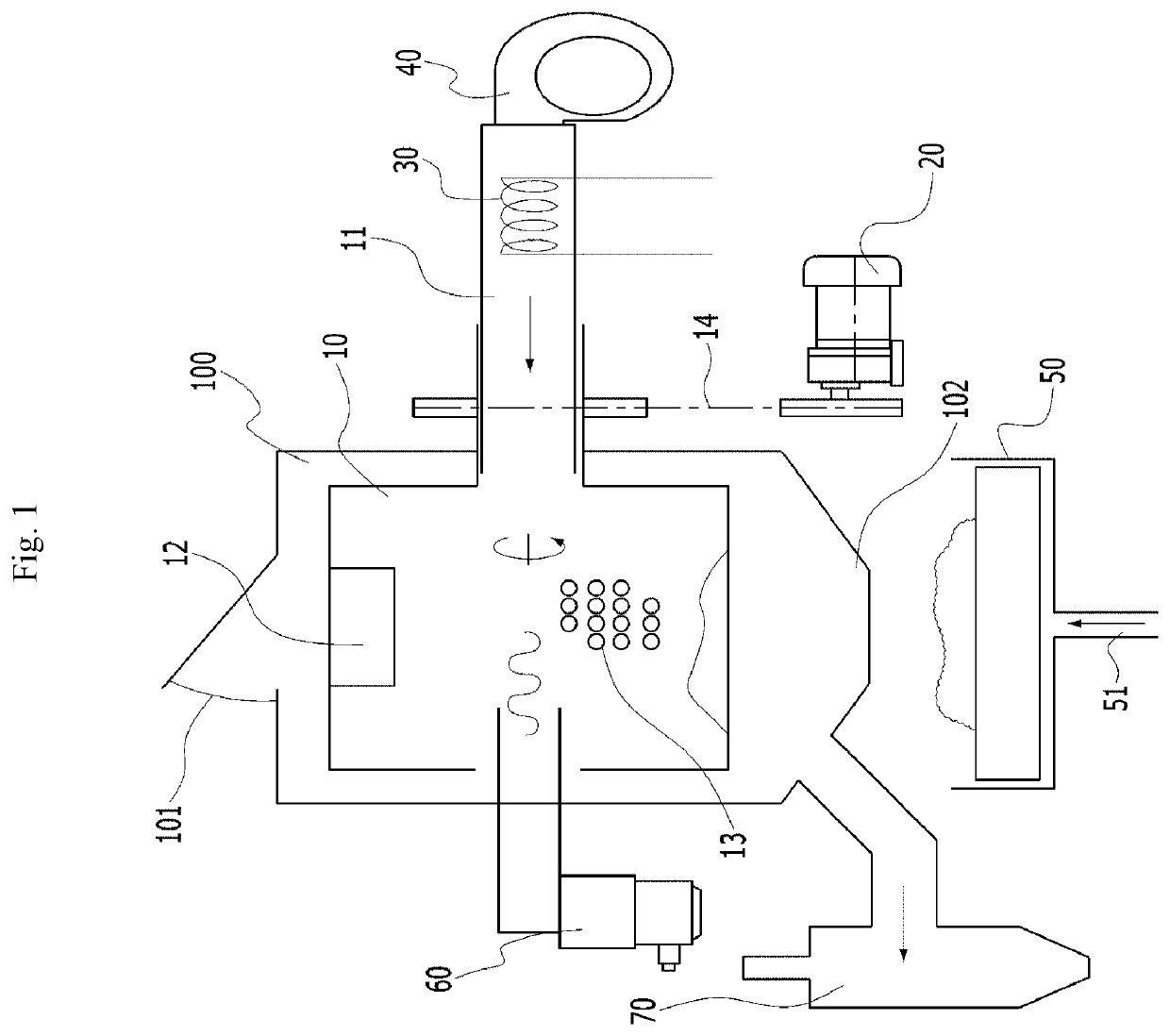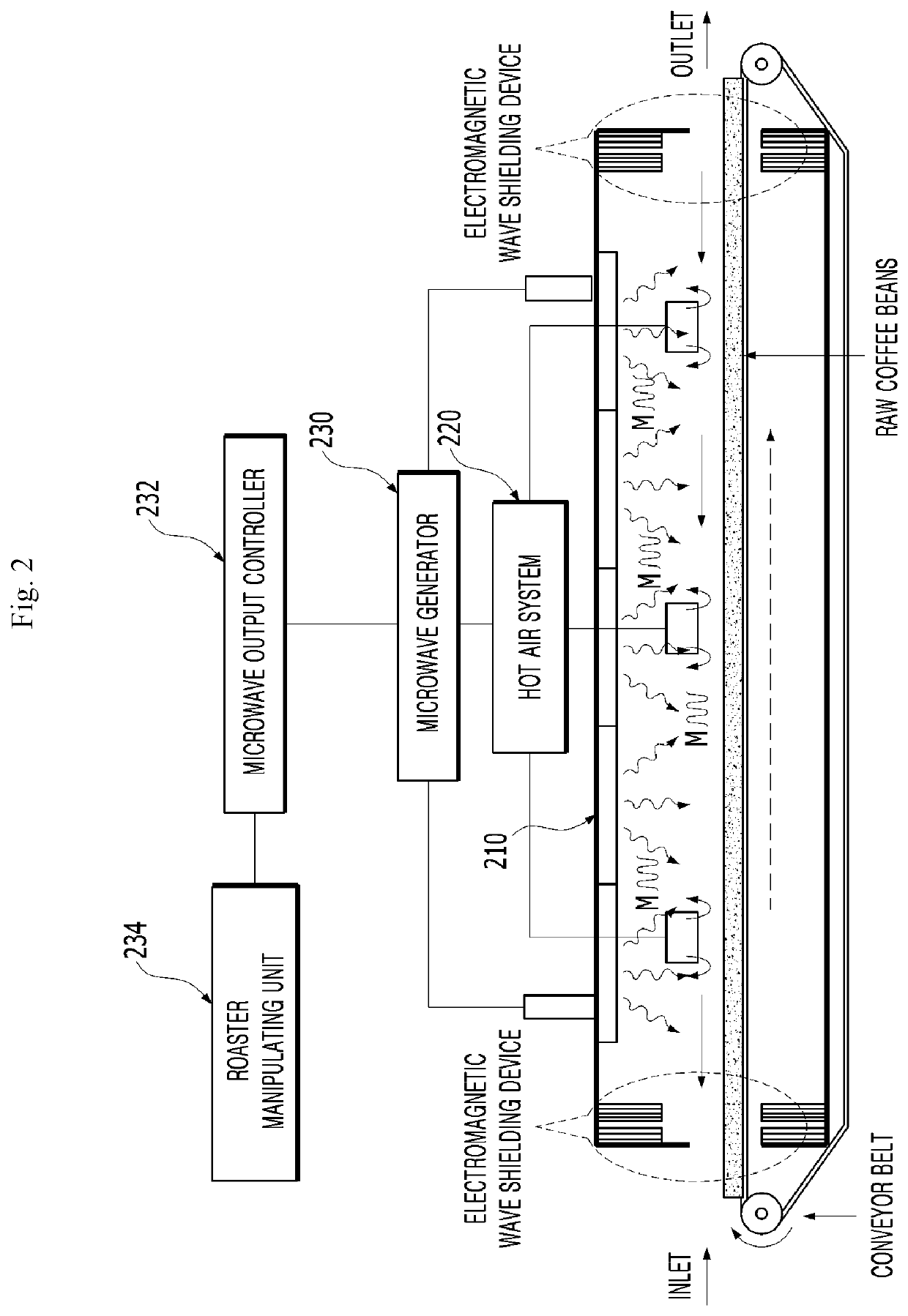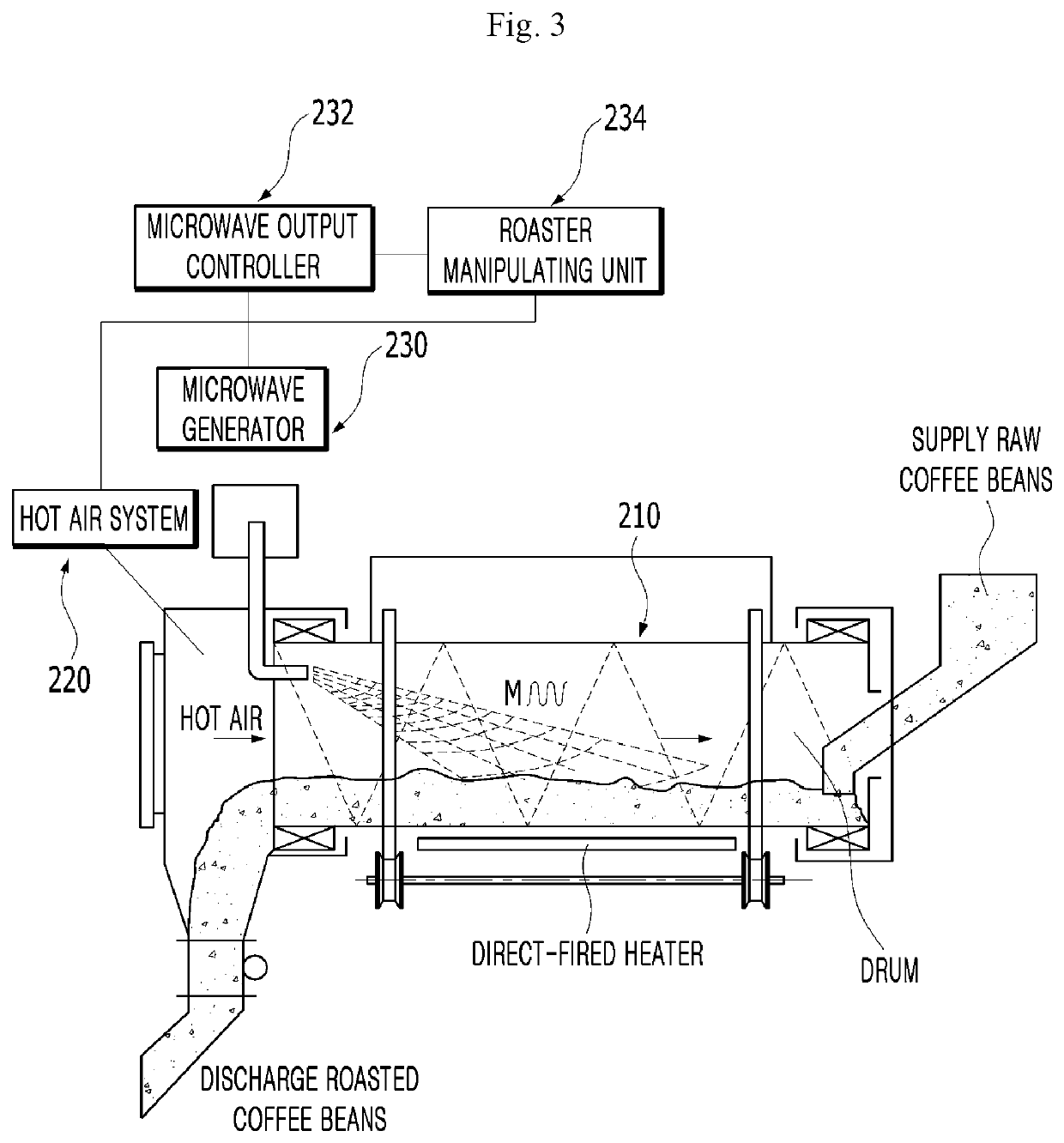Method of roasting raw coffee beans using microwave heating
a technology of raw coffee and microwave heating, which is applied in the field of roasting raw coffee beans using microwave heating, can solve the problems of uneven physical, chemical variations in coffee roasting, low heating efficiency of surface heating-based roasting, and low efficiency of about 25% to 30%, so as to improve productivity, reduce energy consumption, and reduce the effect of heat loss
- Summary
- Abstract
- Description
- Claims
- Application Information
AI Technical Summary
Benefits of technology
Problems solved by technology
Method used
Image
Examples
Embodiment Construction
Technical Problems
[0014]The present invention has been developed to address the foregoing issues and aims to provide a method of roasting raw coffee beans using microwave heating to address the issues with the conventional art that lacks technical features capable of achieving normal coffee roasting.
[0015]The present invention applies microwave heating, known as volumetric heating, as heating source for roasting raw coffee beans. Microwave heating, as volumetric heating, heats raw coffee beans by self heating of raw coffee beans based on microwaves absorbed to raw coffee beans, thereby allowing the surface and inside to be simultaneously heated. In other words, roasting of raw coffee beans via simultaneous heating of the surface and inside makes no or very little difference in physical or chemical variation in the raw coffee beans and, as compared with conventional surface heating-based roasting, leads to a change to creation of chemical substances containing the flavor and aroma of...
PUM
 Login to View More
Login to View More Abstract
Description
Claims
Application Information
 Login to View More
Login to View More - R&D
- Intellectual Property
- Life Sciences
- Materials
- Tech Scout
- Unparalleled Data Quality
- Higher Quality Content
- 60% Fewer Hallucinations
Browse by: Latest US Patents, China's latest patents, Technical Efficacy Thesaurus, Application Domain, Technology Topic, Popular Technical Reports.
© 2025 PatSnap. All rights reserved.Legal|Privacy policy|Modern Slavery Act Transparency Statement|Sitemap|About US| Contact US: help@patsnap.com



